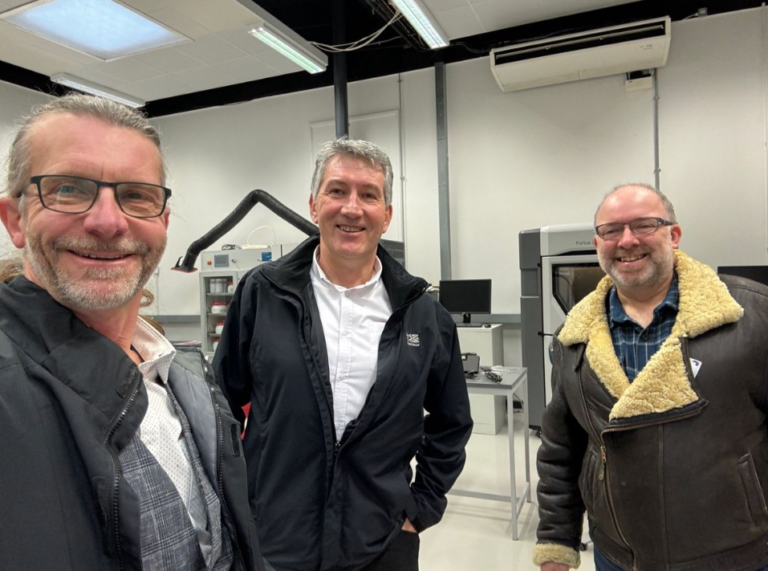Bespoke software that makes your business more efficient and effective helps you scale and adds value.
Whether you’re building a business to provide an ongoing income, or you plan to sell in future, good technology can be pivotal to your success. By commissioning your own software solution, your business owns the IP which, in turn, represents an asset on your balance sheet.
Every business is different which is why it’s so important to consider bespoke software that meets your exact needs. As an entrepreneur/founder, you know better than anyone what your business needs from its tech. Instead of trying to customise off-the-shelf solutions, it can be far more cost-effective and impactful to develop your own ideas into software that delivers real and tangible benefit and bottom-line value.
Bringing a software project from concept to reality means having a clear idea of what you want to achieve and the steps you need to take along the way.
Unfortunately, too many good ideas fall by the wayside, not because they wouldn’t work but because the project plan wasn’t thought through well enough at the outset.
With more than 25 years of experience behind us, we know what it takes to take an idea from concept to reality and avoid the pitfalls along the way. Here we provide a comprehensive guide to the key steps involved. We’ll be exploring these steps in greater detail in the coming weeks and months.
STEP 1: Idea Generation, validation & requirements gathering
Every good software project begins with a spark of inspiration—a concept that addresses a pressing need or improves an existing solution. However, before diving headfirst into development, it’s imperative to validate this idea.
We work closely with our clients to help them test ideas and develop firm project specifications. The best approach is to undertake some Internal market research to understand current processes and the pains they cause to users, managers and decision-makers – and any desired gains by improving the process -, is invaluable. If customers are to use your software, it can be helpful to explore the approaches used by the competition or ideas that could be adapted from other markets. Getting a clear understanding of the experience of customers today and the challenges they face helps to inform your project.
This pre-work is essential to confirm there’s a genuine need for your proposed solution. In this way, you can test ideas and your final concept, getting insights from all stakeholders before you proceed to the next stage.
Once you’ve validated your idea, the next step is to get super clear on the functional requirements for your software project. This phase requires careful consideration of the features and functionalities essential to address the identified user needs. Breaking down these requirements into smaller, manageable tasks facilitates effective planning, allowing us to estimate the time, resources, and skill sets required for each aspect of the project. A comprehensive project plan serves as a roadmap, guiding the development process and ensuring alignment with project goals.
STEP 2: Design
Designing the architectural and technical specifications of your software is a pivotal stage in the development lifecycle. Again, this is a phase we will guide you through, a collaborative approach is key.
The design phase involves creating intuitive user interfaces and getting clear about the overall structure of the tool. The goal of this phase is to create a blueprint that outlines how the software will be implemented, ensuring scalability, maintainability, and adherence to best practices for aspects such as usability for people with disabilities.
STEP 3: Build
The build phase is where you start to see things coming to life. Again, expect to work collaboratively with our team, regular communication in the development phase is key. This is an exciting phase and it should become a ‘eureka!’ moment where what you wanted is what you get – there should be no surprise if we’ve worked closely together to get all the preceding steps right. Even if you’ve had to tweak the functionality along the way, you will start to see the end product. Collaboration and communication among team members play a crucial role in this stage in particular.
STEP 4: Testing
Throughout your project, you will become familiar with our approach never to make assumptions. Comprehensive testing ensures that the software functions as intended across various scenarios and environments, and to iron out any bugs.
STEP 5: Deployment
With development complete and testing finalised, the next milestone is deployment—the process of making the software available to users. Depending on the project requirements, deployment may involve arranging user training or developing accessible information about how to use/get the best from the technology. It will also involve behind-the-scenes work such as setting up infrastructure, configuring servers, and deploying code to production environments.
Again, we will work closely with you and your team to make deployment as seamless as possible.
STEP 6: Refinement & iteration
The nature of software development means it’s an iterative process and subject to continuous refinement and improvement. Feedback gathered from testing, user reviews, and real-world usage serves as valuable input for refining the software. This iterative approach enables us to address issues, optimise performance, and enhance user experience, ultimately delivering a product that helps your organisation to optimise efficiency, serve customers better and allow your business to grow.
We aim to be your long-term partner, understanding your business and delivering ongoing value through technology.
ONGOING: Post-launch support & maintenance
Whilst the project may be complete, it is likely to be never-ending! Before you begin your project you should account for the need for ongoing support and maintenance which is crucial to the long-term value of the software to your business.
We like to monitor the performance and usage of the software post-launch to ensure it is compatible with user behaviour.
Maintenance involves addressing user feedback, promptly resolving issues, releasing updates, and incorporating new features which come to light. Keeping your technology in step with the evolution of your business helps you keep customers happy and stay ahead of your competitors.
Here to help
We are here to help you bring your bespoke software development projects to life, on time and budget. Speak to our experts about the idea you have in mind and let us map out your roadmap to success.





